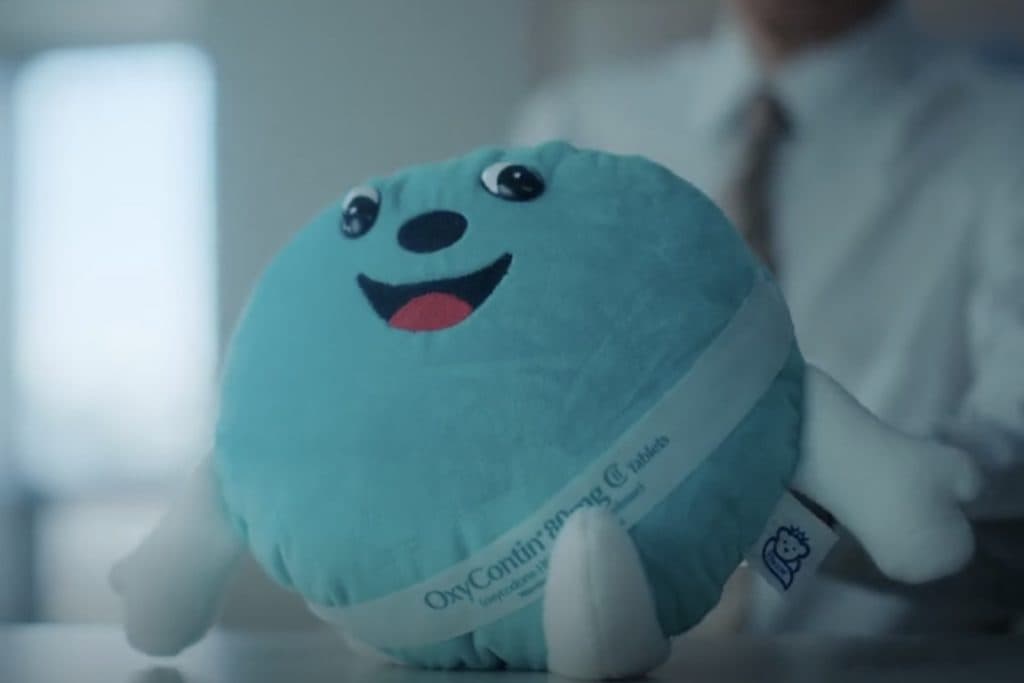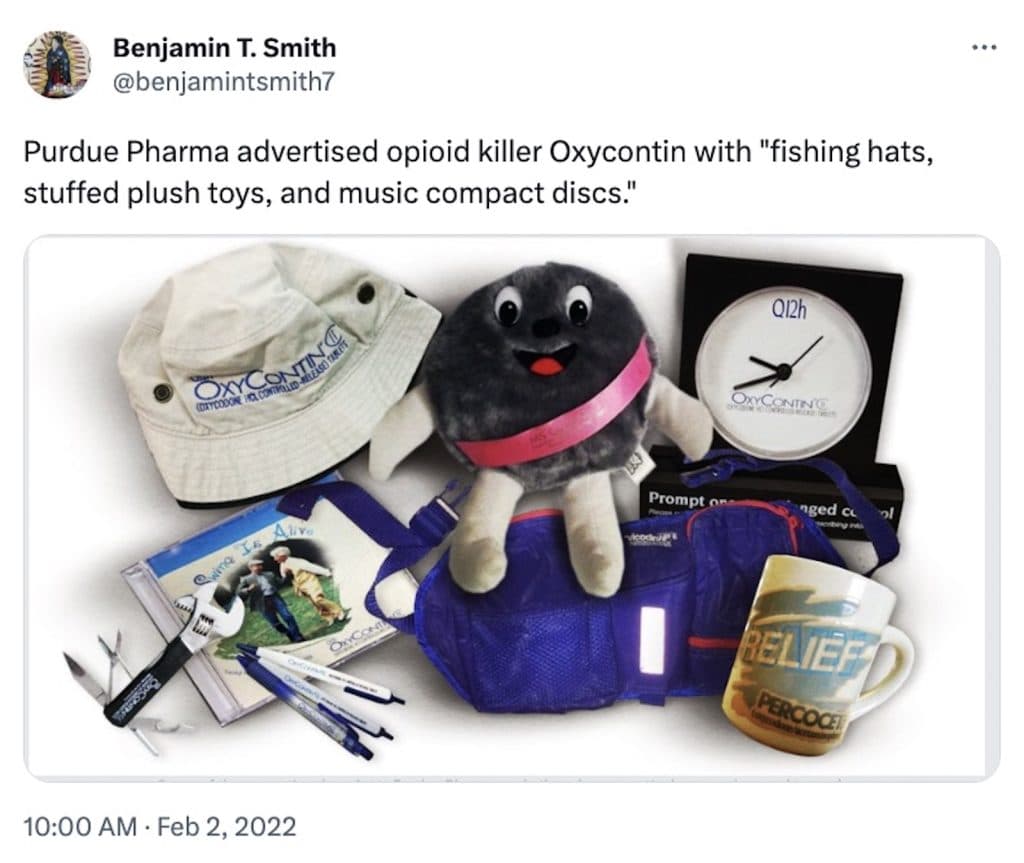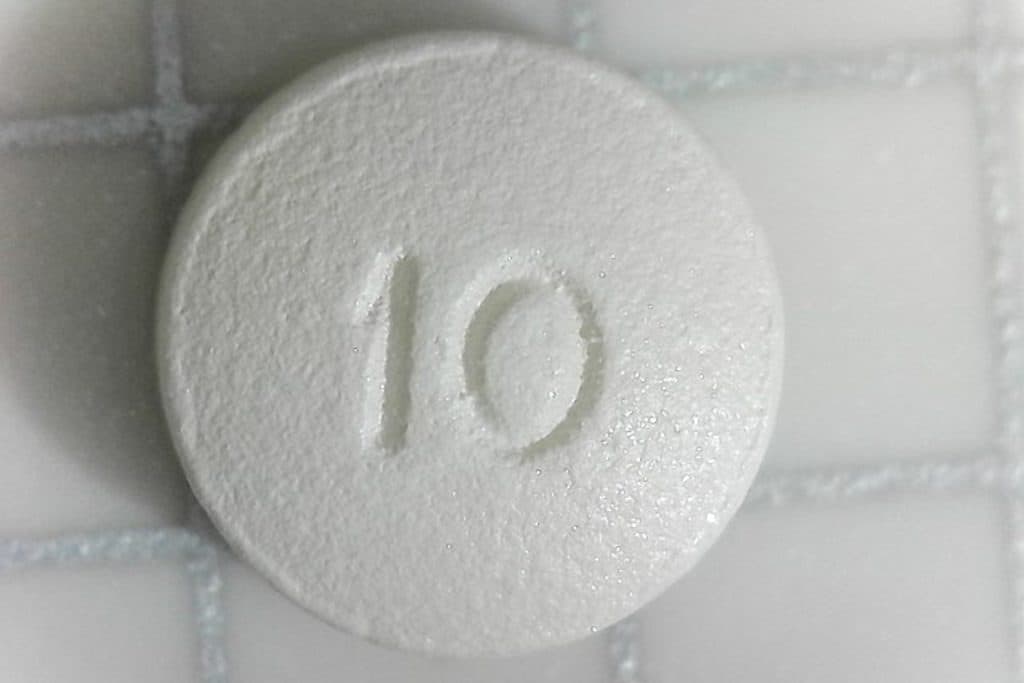Painkiller: Is Edie Flowers real?
 Netflix
NetflixWhile Painkiller on Netflix is filled with villains, there’s one character who does not stop fighting for justice: Edie Flowers. But is she real? Read on to find out, as we also explain OxyContin and the story behind its sinister merch: including that stuffed toy.
Painkiller dropped on Netflix earlier this month, chronicling the shocking rise and fall of the Sackler family’s Purdue Pharma and its aggressive marketing campaign for the highly addictive and dangerous opioid OxyContin.
Much like Hulu’s Dopesick, which told the same story in 2021, there are a number of characters based on real people, including the dastardly Richard Sackler – who was like a bull in his approach to charging ahead with the drug. All in the name of financial gain.
Another similarity is that Painkiller used characters to represent groups of people impacted by the opioid crisis, including doctors, authorities, and everyday pain patients who were sold a lie. So, what about Edie Flowers? Warning: Some may find this content distressing.
Painkiller: Is Edie Flowers real?
In Netflix’s Painkiller, Edie Flowers is a made up character – but she represents the numerous investigators who worked tirelessly to bring Richard Sackler and his house of cards down.
Edie is a no-nonsense lawyer working for the US attorney’s office in Roanoke, Virginia. As we learn throughout the series, her family was ripped apart by the crack epidemic in the 1980s, which motivates her to prevent the same from happening with the opioid crisis.
 Netflix
NetflixOrange is the New Black star Uzo Aduba portrays the character, previously telling Netflix that while Edie isn’t a real person, it wasn’t challenging to get into the role thanks to the extensive coverage and research she was able to conduct.
“[The filmmakers] do this brilliant thing in the story of having these trains [running parallel] to one another,” said Aduba. “The world of Edie Flowers, who is a fictitious person but is a composite of a number of investigators, runs alongside the very real Richard Sackler.”
She went on to say: “Having those points of intersection where the two worlds come together was incredibly impactful and powerful.”
Painkiller: Is the OxyContin stuffed toy real?
Yes, in the early days of OxyContin, marketers would hand out all kinds of merch to draw in doctors and medical professionals – including a plush stuffed toy shaped like a pill and featuring a smiley face.
At numerous moments throughout the series, we see the sinister toy making its way into the homes of spokespeople, in doctors’ offices, and even pharmacies – much to the shock of Edie.
 Netflix
NetflixIn retrospect, it’s truly disturbing to imagine a world in which a kids’ toy was used to promote a drug nearly as strong as heroin, which went on to claim thousands of lives and cause a widespread epidemic across America.
Purdue Pharma didn’t stop at stuffed toys either, having released a whole host of “swag” items including OxyContin-branded fishing hats, mugs, pens, and CDs.
As well as being over-aggressive in its marketing of the drug, critics argued that using plush toys and similar items trivialized a potent and addictive opioid, making it seem harmless or even fun.
The promotional items were also used as a means to influence doctors and medical professionals, who are supposed to make unbiased decisions in the best interest of their patients.
As is portrayed in Painkiller, Edie sees right through the strategy after realizing how widespread the OxyContin issue had become – and how it had flown under the radar of the authorities.
In Episode 2, Edie visits a pharmacy to find out more about a case, but before she gets a chance, an addict comes in to try and rob it of OxyContin. And there sitting on the desk is one of the stuffed toys.
While speaking about the incident many years later, she says: “I’m thinking, at some point in that Purdue marketing meeting, someone said, ‘You know what we need to help us sell our Schedule 2 narcotic? We need a big, furry, squishy, fluffy, cuddly, stuffed OxyContin pill.’
 Twitter/@benjamintsmith7
Twitter/@benjamintsmith7“And so they designed a toy, had it manufactured and shipped all the way from China to Virginia, a drug rep drove it all the way over to Carroll County, put it in the hands of a pharmacist who was about to get jumped by a junkie.
“And so that means the junkie knows about OxyContin, the pharmacist knows about OxyContin, the doctor knows about OxyContin, even the people in China who made the toy know about OxyContin, but I didn’t know sh*t.
“It came in under the radar somehow, and that was the brilliance of the idea and why it spread so quickly.”
Painkiller: What are the OxyContin ingredients?
Another question that has arisen since the release of Painkiller is: what is OxyContin made from? The main active component is oxycodone hydrochloride, a strong, semi-synthetic opioid often used to treat severe pain.
As per the FDA, the inactive ingredients include: ammonio methacrylate copolymer, hypromellose, lactose, magnesium stearate, polyethylene glycol 400, povidone, sodium hydroxide, sorbic acid, stearyl alcohol, talc, titanium dioxide, and triacetin.
Oxycodone is created by modifying thebaine, an alkaloid found in opium, which itself is extracted from the poppy plant.
 Creative Commons
Creative CommonsPurdue pushed the product in varying strengths, often recommending far too high a dose for pain patients who should not have been taking such strong opioids.
What’s more, the Sacklers made the claim that one tablet would last for 12 hours, and when patients started to build a tolerance or the effects wore off before their next dose, they told doctors to prescribe higher doses within the same timeframe.
While most doctors would recommend starting on 10mg, Richard Sackler and his family members at Purdue kept pushing for sales reps to increase the dose, even releasing a 160mg tablet – which were nicknamed “OxyCoffins”, for obvious reasons.
OxyContin is described as the “chemical cousin” to heroin, and twice as strong as morphine. While prescribing strong opioids is nothing new, up until Purdue’s campaign, they were generally saved for cancer pain and end-of-life palliative care.
Although the Sacklers and Purdue have faced thousands of lawsuits over the years, for many, the damage is done.
Painkiller is available to stream on Netflix now. You can check out further coverage below:



